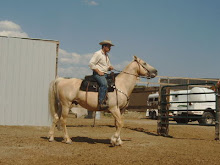Curing meat and smoking meat
I was poking around on line and found this page:http://pods.dasnr.okstate.edu/docushare/dsweb/Get/Document-2055/ANSI-3994web.pdf
Here are some of the recipes and information.
Selection and Handling of Meat
Meat is a highly perishable product in which deteriorative changes begin soon after bleeding the animal. The primary cause of product deterioration is microorganisms which may be bacteria, yeasts, or molds. The tissues of the living animal
are essentially free of these. However, the first source of contamination is with the sticking knife in the bleeding process. Other sources of contamination are associated with handling conditions such as contact of the hide, puncture of the intestinal tract and improper cleaning of equipment used for cutting and processing. The best way to keep deterioration of product to a minimum is with low cooler temperatures and a good sanitation program. Proper handling of meat is the key to successful meat curing.
Rapid chilling of the hog carcass or any other meat cuts is a must to prevent spoilage. With adequate refrigeration (32-35°F.), it takes 12 to 15 hours to chill a 150-pound hog carcass down to 40°F internal temperature. This is extremely important since warm meat may start spoiling before the salt penetrates to the center of the cut. “Ham Sour” from anaerobic
Meat Curingbacteria present in lymph nodes or bone joint may result if the fresh (uncured) ham is not chilled below 40°F.
Cuts most commonly cured from pork are the ham, shoulders, and belly, while jowl and loin are sometimes cured. Most commonly cured beef cuts are briskets, strips of round, or chuck and plates which can be cured as beef bacon.
Sanitary conditions can affect the flavor of fresh or cured meats. Thus, it’s essential to have clean equipment and facilities
to produce the highest quality cured product.
The work area should be cleaned daily with warm water (130°F.) and detergent followed by a sanitizer for microbial control. All complete sanitation programs should include these steps
Method of Curing
Curing materials may be in either dry or liquid form. They will be applied either to the surface of meat or into it by some injection method. The oldest method of cure application is dry cure in which the curing ingredients are rubbed on the surface of the meat. The dry, sugar cure method can be used under wider temperature variations and will have less spoilage problems under unfavorable curing conditions. A simple and time-tested dry-curing formula is as follows:
• 8 Ibs. salt
• 3 Ibs. sugar
• 2 oz. sodium nitrate
• 1/2 oz. sodium nitrite (or a total of 3 oz. nitrate available; remember, excess nitrite is toxic)
Also, a prepackaged cure or modern cure mix can be purchased from a spice or seasoning company.
One ounce of cure mixture per one pound of pork should be used. Hams will require three separate rubbings at three- to five-day intervals. Picnics and butts will require two rubbings
at three- to five-day intervals. The belly will require one thorough rubbing with a little sprinkling over the flesh side of each belly. The cure mixture should be divided into two or three portions for the number of rubbings. At the end of the three- or five-day interval another portion of the cure mixture should be rubbed in. When curing, meat should be held in a non-corrosive vat or containers that will drain so the cuts do not rest in their own brine.
The length of curing is seven days per inch of thickness. An example, if a ham weighs 12-14 pounds and is 5 inches thick through the thickest part, this ham should be cured 5 x 7 = 35 days. A belly two-inches thick should cure in 14 days. Another important consideration is to be sure the cure is rubbed into the aitch bone joint and hock end of the ham to avoid bone sour. During curing the product should be stored at temperatures between 32° to 40°F.
Smoking
Three traditionally recognized reasons for smoking meat are for preservation, appearance, and flavor. Smoked meat is less likely to spoil than unsmoked meat. Smoking improves the flavor and appearance, aids in reducing mold growth,as well as retards rancid flavors. It takes about 24 hours to smoke and cook hams. Smoking is usually accomplished in three stages. During the first phase, or drying stage, the smokehouse is heated to 125°F. All dampers are opened to allow all excess moisture to escape and there is no smoking during this 8-hour period. During the next eight-hour stage, the dampers are partially closed and the temperature on the house increased to 135°F. and smoke is generated. The smoke is continued throughout the third stage with all dampers closed, and the temperature on the house raised to 180°F. Hold this temperature until the product temperature reaches 142°F. These hams will require further cooking in the home for full tenderization. Hams sold as “fully cooked” have received extra heat processing to an internal temperature of at least 148°F.
The wood used to generate the smoke should be of the hardwood species. Do not use pine or any other resinous wood or sawdust because the smoke from such wood will be sooty and strong smelling. It is recommended to use wood or sawdust from hickory, apple, plum, oak, maple, ash, or any non-resinous wood to obtain satisfactory results.
Summary
Successful curing is dependent on proper handling of meat and using good quality cure ingredients. Curing provides preservation of product, but such cured products still have a short shelf life of 30 days at refrigerated temperatures. Remember
to handle with care.
Monday, September 13, 2010
Subscribe to:
Post Comments (Atom)


![[Most Recent Quotes from www.kitco.com]](http://www.kitconet.com/charts/metals/gold/t24_au_en_usoz_2.gif)
![[Most Recent Quotes from www.kitco.com]](http://www.kitconet.com/charts/metals/silver/t24_ag_en_usoz_2.gif)




No comments:
Post a Comment